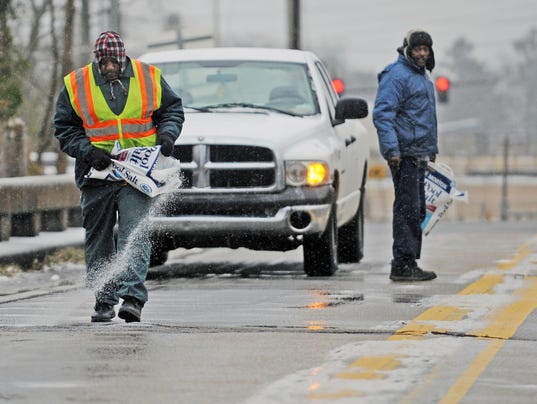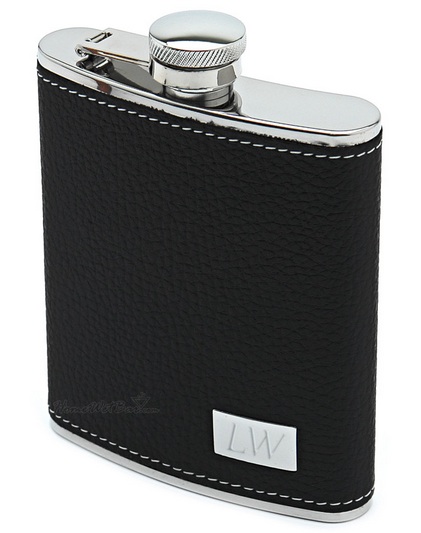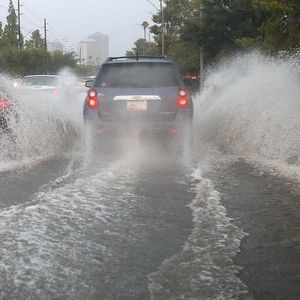Nine Weather Myths Debunked

(Photo: Ryan Moore, AP)
City employees spread salt along a bridge as patches of ice begin to form on Jan. 28, 2014, in Hattiesburg Miss.
Bad forecasts are one thing, but weather myths can be even more dangerous and last a lifetime, or longer.
Here are some tales of weather folklore to help you separate fact from fiction:
1. It’s too cold to snow.
Snow can occur at any temperature below freezing. Besides cold air, there also has to be moisture in the air to create snow. Since warmer air can hold more moisture than colder air, larger snowstorms tend to occur when temperatures are in the 20s Fahrenheit. Still, snowflakes can form at any temperature below freezing.
2. Salt melts ice.
It doesn’t. Salt (or sugar, or many soluble substances) lowers the freezing point of water (from below 32ºF). This can prevent ice from forming, but it doesn’t melt it.
3. You lose more heat through your head.
Your head emits the same amount of relative heat as your other body parts. So despite what your mother may have told you, body heat does not discriminate when escaping. To be sure, you should still wear a hat to ward off the cold. Just don’t sacrifice protecting other areas of your body.
 4. Brandy and cognac warm your body temperature.
4. Brandy and cognac warm your body temperature.
Don’t let the image of that flask collar under the chin of a Saint Bernard fool you: Alcohol constricts blood vessels and minimizes blood flow to your skin. That means it reduces your body’s ability to warm up. Instead, drink warm, non-alcoholic beverages to battle the cold.
5. Placing large Xs on your windows with duct tape will make them stronger when storm winds blow.
The only thing taping the surfaces of windows does is create larger shards of glass if a window were to shatter. Instead, use storm shutters and close your drapes or blinds (or both). Window coverings can help prevent debris from blowing into your home. Flying debris is the biggest cause of injury and death during storm winds.
[one_fourth]
6. Open your windows a crack during a tornado so your house won’t implode.
There is no scientific evidence that air pressure builds enough inside your home to cause an explosion. Moreover, leaving your windows open — even a little — increases the chances that debris can blow in, or that strong winds can wreak havoc on debris inside your house.
7. Ration your drinking water.
Your body is the best tell-tale of how much water you need. So continually hydrating even if you’re low on supply is the best way to stay healthy. Drinking what you need now and finding more later is the best survival tactic.
8. Lightning doesn’t strike the same place twice.
It can and has. Even individuals have been struck more than one time. Which provides a keen lesson: scramble for safe shelter during thunderstorms.
9. You can get electrocuted by touching someone who has been struck by lightning.
The electrical charge produced by lightning travels through a person — in an instant — and grounds itself in the earth. So, unless you are connected to a person when he or she is struck, you have no fear of getting zapped.








